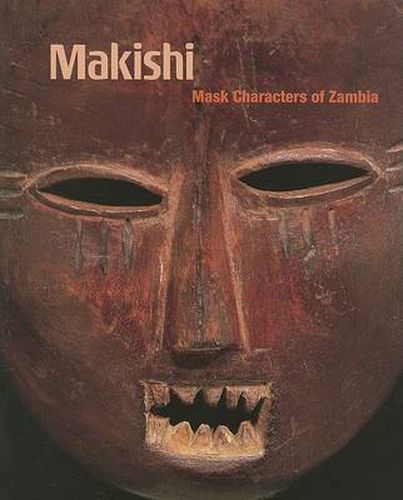Readings Newsletter
Become a Readings Member to make your shopping experience even easier.
Sign in or sign up for free!
You’re not far away from qualifying for FREE standard shipping within Australia
You’ve qualified for FREE standard shipping within Australia
The cart is loading…






In Makishi: Mask Characters of Zambia, Manuel Jordan reveals the beauty and complexity of the remarkable masquerade traditions of the Chokwe, Mbunda, Lunda, Lwena/Luvale, and Luchazi peoples who live in the Three Corners region of northwestern Zambia, northeastern Angola, and southwestern Democratic Republic of the Congo. The distinct yet overlapping mask types and styles used by these groups reflect their continual interaction and demonstrate the constant reformulation of visual and performance genres. Relations among peoples of the Three Corners are further complicated by recent refugee flows, and the masquerades that Jordan considers and vividly illustrates in his field photographs reflect histories of compromise and creative tension, as well as contemporary struggles for survival.
While exquisite masks drawn from the Fowler Museum’s collections demonstrate long use, Jordan shows how new characters can be created within earlier categories, so that basic dramatic plots are preserved while reference is made to new technologies, foreign encounters, and the dynamics of social interaction in a rapidly changing world. In many ways, as the author astutely argues, the masks are a performative mechanism used to explain, cope with, and, often enough, celebrate life’s most difficult transitions and transformations. Makishi vibrantly documents the ability of theater to perpetuate tradition while providing an adaptive leading edge.
$9.00 standard shipping within Australia
FREE standard shipping within Australia for orders over $100.00
Express & International shipping calculated at checkout
In Makishi: Mask Characters of Zambia, Manuel Jordan reveals the beauty and complexity of the remarkable masquerade traditions of the Chokwe, Mbunda, Lunda, Lwena/Luvale, and Luchazi peoples who live in the Three Corners region of northwestern Zambia, northeastern Angola, and southwestern Democratic Republic of the Congo. The distinct yet overlapping mask types and styles used by these groups reflect their continual interaction and demonstrate the constant reformulation of visual and performance genres. Relations among peoples of the Three Corners are further complicated by recent refugee flows, and the masquerades that Jordan considers and vividly illustrates in his field photographs reflect histories of compromise and creative tension, as well as contemporary struggles for survival.
While exquisite masks drawn from the Fowler Museum’s collections demonstrate long use, Jordan shows how new characters can be created within earlier categories, so that basic dramatic plots are preserved while reference is made to new technologies, foreign encounters, and the dynamics of social interaction in a rapidly changing world. In many ways, as the author astutely argues, the masks are a performative mechanism used to explain, cope with, and, often enough, celebrate life’s most difficult transitions and transformations. Makishi vibrantly documents the ability of theater to perpetuate tradition while providing an adaptive leading edge.